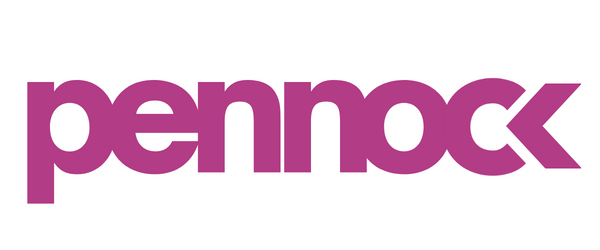Digital Marketing Insights from an Agency Owners Perspective
We recently spent time with Nadia Naceva of Influencer Marketing Hub about the state of digital marketing and campaign planning. Take a look at what we had to say!
How do you determine the best marketing channels for a particular campaign?
Nikki Lindgren: The marketing channels should align with the campaign's theme and objectives. A well-rounded channel strategy is ideal, but it requires more preparation, a larger team, and a bigger budget. I often find it helpful to treat the campaign as a new product launch, which naturally encourages a 360-degree approach across email, SMS, social media, creators, PR, affiliates, direct response paid, and awareness paid ads. Optimizing campaign pages for SEO before launch is the cherry on top.
Can you share an example of a marketing strategy that delivered outstanding results?
Nikki Lindgren: Absolutely! We worked with a fragrance brand on a National Fragrance Day campaign, which extended into a month-long initiative. The campaign was planned with a 360-degree approach, and while we focused on paid ad strategy and execution, we were also involved in decisions about owned and earned media. As a result, sales on National Fragrance Day exceeded projections by 122%, and the entire month outperformed the plan by 78%. In another example, we found that for a luxury jewelry brand, Mother's Day campaigns featuring a mature mom with her adult daughter performed better than those showing a young mom with a baby.
What do you think was key to the campaign’s success?
Nikki Lindgren: Strong planning and organization are essential for a campaign to run smoothly. Proper planning involves briefing the right teams at the right times, enabling them to contribute effectively. Additionally, closely monitoring performance and reporting daily allows teams to pivot as needed to ensure success.
What impact has AI had on your marketing strategies? How have you leveraged AI tools to enhance your marketing efforts?
Nikki Lindgren: We use AI to improve the speed and efficiency of tasks like creative briefing, ad copy variations, and landing page design. While AI isn’t a replacement for human input, it significantly reduces the time required and boosts overall efficiency.
Can you share an example of an AI-driven campaign that yielded significant results?
Nikki Lindgren: While we haven’t launched a campaign entirely driven by AI, machine learning campaigns, such as Google Performance Max and Facebook Advantage Plus Shopping, have outperformed traditional audience builds by 38% in terms of ROAS.
What advice would you give to brands looking to revamp their marketing strategies?
Nikki Lindgren: Don’t get distracted by shiny objects or be impatient. Revamping a strategy requires time and dedication.
What future trends do you foresee in AI marketing tools?
Nikki Lindgren: I see AI becoming most beneficial in analysis, business intelligence, and planning. However, I don’t anticipate it taking over tasks like copywriting, creative development, or campaign management anytime soon.
What key elements do you consider when developing a growth strategy for a business?
Nikki Lindgren: I start by reviewing the brand's historical data. If it’s a new brand, I model based on other brands we've taken to market. Historical data is crucial because it provides a realistic foundation for growth. After that, I look at real-time trends across our client portfolio and determine the best paid channels based on audience and product-market fit. Then, we layer in earned media tactics to complement paid efforts.
How do you identify the most effective growth channels for a specific brand?
Nikki Lindgren: We align the channels with the brand's goals. If the focus is on achieving the lowest CAC quickly, we prioritize awareness channels with strong direct response, like Google and Meta. If the emphasis is on acquiring new customers with less focus on ROAS, we recommend engagement channels like TikTok, Pinterest, and audio ads.
Can you share a case study of a successful growth strategy you’ve implemented?
Nikki Lindgren: We observed that brands saw a 15% improvement in ROAS when they used creative that was 50% CGC/UGC and 50% brand-produced. This mix helps create a well-rounded approach to awareness, which resonates with customers. Additionally, we found that for every $3K in planned monthly spend on social platforms, brands needed one new creative variation. So, a $30K/month budget would require 10 new assets.
What trends in digital marketing are currently influencing growth strategies the most? Are there any emerging trends?
Nikki Lindgren: Creator-generated content remains a dominant force in ad strategies and should be utilized heavily while it’s still effective.
What are the most effective digital marketing tactics you use to drive engagement? How do you prioritize different digital marketing tactics in your strategy?
Nikki Lindgren: Focusing on the first three seconds of video is crucial for improving engagement rates.
Can you share examples/case studies of how data analytics have transformed a client’s digital strategy?
Nikki Lindgren: Strategy and analysis are inseparable. We regularly monitor our clients' metrics, ranging from topline performance to specific channel campaigns. This holistic approach allows us to form hypotheses and adjust strategies to improve outcomes. We primarily use tools like GA4, Shopify, Northbeam, Triple Whale, and platform insights.
How do agencies help businesses with brand positioning and differentiation in a crowded digital marketplace? Can you provide insights into how agencies use market research to inform their digital strategies?
Nikki Lindgren: We help clients uncover and creatively express their unique selling propositions (USPs). We also spend a lot of time researching competitor strategies on platforms like Foreplay and ad libraries.
How do you ensure a smooth transition from awareness to consideration to purchase?
Nikki Lindgren: We maximize ad placements with different creative variations to saturate the core audience and build strong brand consideration, ultimately driving them to purchase.
